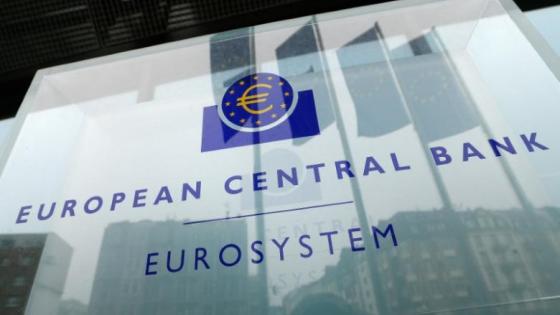Money matters. It facilitates economic activity and, as observed by Walter Bagehot in 1873, “money is economic power” (Bagehot 1873). The money at the core of modern economies is central bank money, what bankers call ‘liquidity’. Central banks inject money into the economy, using banks as intermediaries, against collateral. So, if money is economic power and money is issued against collateral, it is important to understand the nature of this collateral, and the terms of the exchange. Yet remarkably little is known about either. In a recent book and working paper, I unpack this ‘open secret’ of central banking and discussed the implications for the financial system, the economy, and society (Nyborg 2015, 2017).
The terms of exchange between central bank money and collateral are not determined in a market, but instead by the collateral and interest rate policies of central banks. A central bank’s collateral policy is described and defined by its collateral framework.1
While a lot of public and academic attention is given to interest rate policy, collateral policy is largely ignored. Monetary policy is typically identified with interest rate policy. I argue that collateral frameworks may distort financial markets and the wider economy.
Following the recent growth in the sizes and influence of central banks, we need a more comprehensive understanding of monetary policy. In the Eurozone, monetary policy leads the fight to save the euro and the European project. Collateral policy is an integral part of those efforts.
Different central banks have different collateral frameworks. My focus has been on that of the Eurosystem, which the ECB is authorised to design and update (ECB 2000).[2] This is especially interesting because of the richness and complexity that arise from a single currency across multiple countries. The Eurozone is also a major economy, and its well-publicised financial, economic, and political problems have an impact on the rest of the world. Concerns about the euro are part of or, arguably, at the core of these problems. Gaining a sounder understanding of the Eurozone’s monetary system at the most fundamental level is, therefore, of great value.
Towards that end, I conducted forensic research into the Eurosystem’s collateral framework. This involved studying the official, legal documentation, then the empirical evidence that clarifies how the legal rules are implemented, and the consequences. The evidence shows that the Eurosystem’s collateral framework impairs market forces and discipline. The absence of market forces creates a vacuum into which other forces can step. In Nyborg (2017), I examine the role of rating agencies and politics.
I use this analysis to study the euro crisis. Collateral policy has been integral to the ECB’s reaction to the crisis – in the words of Mario Draghi, president of the ECB, “to do whatever it takes to preserve the euro”.
This includes the ECB’s unconventional monetary policies, the indirect bailouts they have provided, the endgame of the euro crisis, and the euro’s fundamental problem of a lack of credibility and what might be done about it.
Collateral frameworks define the set of eligible collateral that financial institutions can use in operations with central banks to obtain central bank money. They also determine the quantity of money that a central bank will supply for each eligible collateral, by, for example, setting haircuts in repos with eligible counterparties. (In the Eurozone, central bank money has traditionally been injected into the banking system via repos.) This places collateral frameworks at the core of the monetary system and the financial system that extends (from) it.
Negative impacts of collateral frameworks
There are several dimensions to the impact of collateral frameworks. Because eligibility means that a security can be refinanced through, or bought by, the central bank, this can affect its repo rate, liquidity, and price in the secondary market. The haircuts applied in repos by the central bank to different collateral may be set so that the impact of eligibility differs across asset classes and individual securities, by design or possibly inadvertently.
For instance, to make banks' balance sheets more liquid, the central bank can favour illiquid collateral with relatively low haircuts. While this may improve channel liquidity where it is needed, it may distort money and asset markets by reducing the role of market discipline.
But, if central bank money is only available against igloos, or igloo-backed securities, igloos will be built (Nyborg 2017). In other words, collateral frameworks that favour illiquid collateral may also stimulate its endogenous production. More generally, the incentives created by a central bank's collateral framework may affect the production of financial assets and the underlying real assets. Therefore, if the collateral framework favours housing, we probably get more (and bigger) property bubbles.
Collateral frameworks can also impinge on market discipline and banks’ incentives to monitor debtors by accepting collateral that does not trade at all. They can support the influence of politics on banks and the financial system by extending favourable terms to collateral with local, regional, or central government guarantees. Haircut rules and guarantee policies can interact to increase market segmentation. Collateral frameworks can facilitate indirect bailouts, propping up poorly performing banks that should optimally be resolved. A collateral policy that favours illiquid and risky collateral may also weaken the balance sheet of the central bank.
Little role for market discipline in the Eurozone
The Eurozone’s collateral framework suffers, to varying degrees, from all these problems. There are between 30,000 and 40,000 different securities on the public list of eligible collateral, ranging from government bonds to unsecured bank bonds and asset-backed securities. The overwhelming majority of these securities do not have market prices. About one-third of them trade on non-regulated markets.
In addition, banks use non-marketable assets and securities with private ratings that are not on the public list. More often than not, Eurosystem collateral values are based on model, rather than market, prices. Banks prefer to use collateral where the incidence of theoretical prices is higher. In general, Eurozone collateral policy is biased towards risky and illiquid collateral. Market forces have a minor role in the collateral frameworks. This is clear when haircuts in Eurosystem repos are updated only every three to four years.
In short, there is little role for market forces or discipline at the heart of the monetary system in the Eurozone. Overall, Eurosystem collateral policy can be described as accommodative. This is an impediment to market integration.
An absence of market forces and discipline at the core of the monetary system creates a vacuum. Rating agencies and politics step into this vacuum. I estimate that the ratings of DBRS, a credit ratings agency, have helped add around €200-300 billion in increased collateral value to bonds issued by Italy, Spain, and Portugal. The Italian government granted an unprecedented number of guarantees to low- or non-rated Italian bank bonds in the run-up to the second of its three-year long-term refinancing operations, which injected approximately €1 trillion into the banking system. Around 10,000 unsecured bank bonds trading on non-regulated markets were added to the public list of eligible collateral around the same time, even as the value of eligible collateral vastly exceeds banks’ aggregate demand for central bank money. On balance, this – and other – evidence suggests the ECB has indirectly bailed out some Eurozone banks and sovereigns.
The policies of the ECB appear to be spiralling ever outwards. On the other hand, the fundamental problem of the euro is political, to do with international relations. As a result, it is unclear that these policies will be sufficient to preserve the euro. The indirect bailouts afforded by the ECB’s policies are also inefficient, because they are indiscriminate.
A broader message is that central banks’ collateral frameworks are the foundation of the monetary and financial system. They are an integral part of monetary policy, having potentially far-reaching consequences that need to be better understood.
Furthermore, like other institutions of power, central banks should arguably be subject to scrutiny, checks, and balances. We can do this by clarifying central bank collateral frameworks, the opaque structures that are at the heart of central banking and the money creation process.
References
Bagehot, W (1873), Lombard Street: A Description of the Money Market, Homewood, IL: Richard D. Irwin, Inc. (reprinted in 1962 from the Scribner, Armstrong & Co. edition).
ECB (2000), “Guideline of the European Central Bank of 31 August 2000 on monetary policy instruments and procedures of the Eurosystem”, Official Journal of the European Communities L 310/1, 11 December, pp. 1–2 and 31–44.
Nyborg, K G (2015), “Central bank collateral frameworks”, University of Zurich, SFI working paper and CEPR Discussion Paper No. 10663.
Nyborg, K G (2017), Collateral Frameworks: The Open Secret of Central Banks, Cambridge University Press.
Endnotes
[1] Central banks typically do not use the term ‘collateral policy’. I argue that their collateral frameworks define and represent policy.
[2] The Eurosystem is the collective structure of national central banks in the Eurozone, spearheaded by the ECB.




